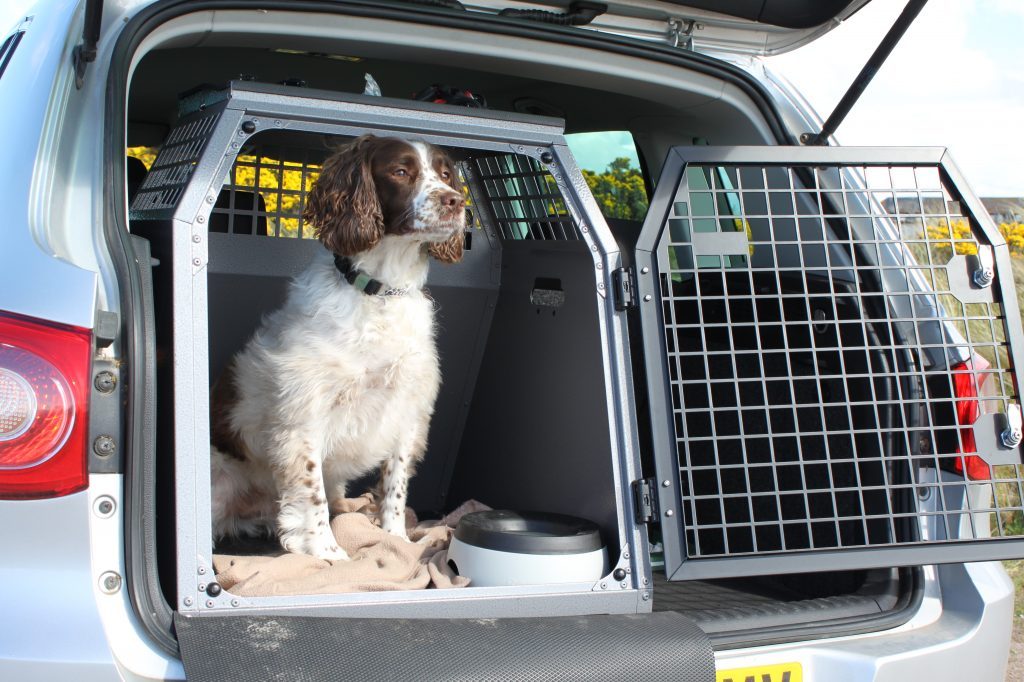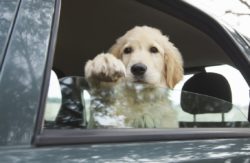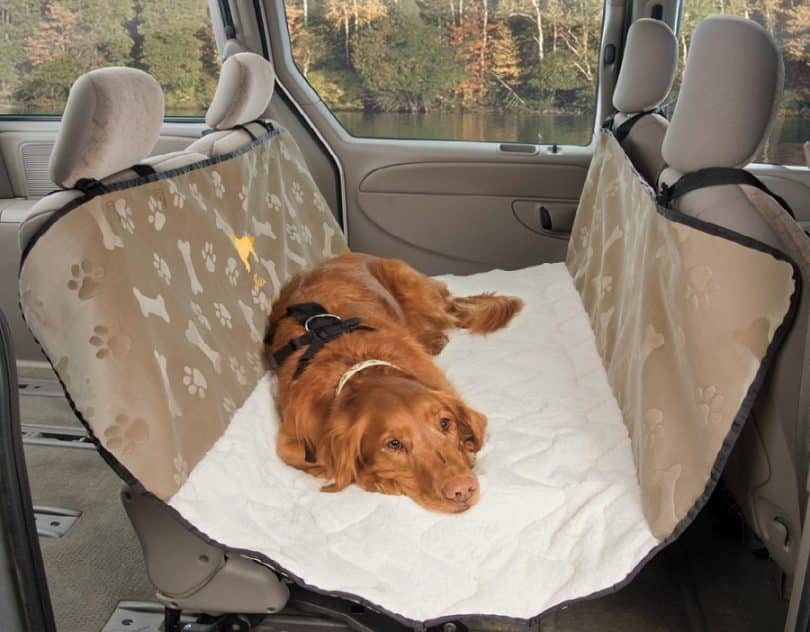Driving With Dogs in Your Car – The Law & Travel Tips
Having a dog is one of life’s greatest experiences. It not only teaches us responsibility but also of how to take care of a fellow being…and therein lies the ultimate objective of owning a dog – to keep it safe in all respects.
Try to think of ways that will protect your dog wherever you go in your car. So many dog owners tend to just stick them in the back of a car and hope they’ll stay put. Remember, they are animals and may jump around inside the car when excited by other dogs spotted outside the car.

Driving with dogs requires careful planning. So if you’re unsure of the best ways to keep them safe when travelling, here’s a guide to cover the basics…
First, a Look at the Law and Driving with Dogs in Cars
If you’re not familiar with Rule 57 of the Highway Code, now’s the time to brush up. It states that drivers are responsible for making sure dogs (and other animals) are suitably restrained in a vehicle so they can’t distract or injure you – or themselves – during an emergency stop.
There’s a good reason for this. A 32kg dog, such as a Labrador, will be thrown forward in a 30mph crash with such sheer force that it would weigh the equivalent of 100kg on impact – a phenomenon safety experts call ‘canine cannonball’.
Some Ways to Keep your Dog Safe While Driving
Front Seat May Equal a Fine
Never drive with your dog in the front seat. If it is not leashed or secured, there is the chance of it going walkies around the car while you’re driving. The combination can become dangerous, and you can also end up with a fine – and points on your licence – if caught.
Open a Window
Some dogs tend to become anxious when travelling in a car. Try to minimise their angst by lowering the window slightly. Avoid lowering it the whole way down as Rex may want to try and leap out. So, open just enough to get fresh air to keep him from panicking. It may reduce the chances of him bringing up his breakfast on your new upholstery, too.
Back Seat and Seatbelts
As mentioned, if you are going to take your dog on trips with you, do keep him in the back seat. The dog will only be limited to one section of the car. Also, try and put a seatbelt on for your dog – but please NEVER the ones intended for us humans. These days, there are quite a few types of car seatbelts available, specifically designed for our canine friends.
Also, you may want to put a tarp or replaceable pet seat cover down just in case, ideally thick enough and fluid-resistant to handle any type of pet mess. You will want to have a roll of paper towels handy as well and perhaps some wet wipes. I know…just like children!
Stop and Check
Plan regular stops to check on your canine companion – it’ll be a good opportunity for a leg-stretch for all of you, too. A brief five-minute dog walk in a safe area will do the trick. If he is getting too hot or sleeping the entire time, then there could be something wrong. A healthy dog will want to stick his nose out the window, while a sick one will not eat or drink. Look out for those tell-tale signs before your dog gets ill.
Travel Crates
These are a good way to travel with your pets. They serve as captive and safe pens for them so they can be transported. These are also good because they serve as a sleeping chamber for them. Inside can be made cool and dark, making the conditions great for sleeping.
When purchasing a crate, make sure that it will fit the dog. Pet shops sell them in a range of sizes from the smallest dog to the largest. Keep in mind that not all crates will fit in your vehicle.

Consider Fitting Sunshades
Even when you’re driving with the windows open, or the air conditioning is blowing cool air, pets are typically in the rear or boot of the car and away from the air source and often under the full glare of the sun. It gets hot back there, so consider investing in sunshades.
Water, Treats and Toys
Just like humans, dogs also need water to survive – but remember, they don’t sweat like we do. Their only way of cooling down is by panting. Whenever you take them along with you, always take some cold water. Dogs tend to become dehydrated very quickly and need water to rehydrate – just like we do. It doesn’t matter if you’re taking them down the road or across several counties. They need water.
You can use bottled water but try and ensure it’s chilled. Try to avoid warm water as it will only make them want more. Water is relatively inexpensive and required for good health.
Treats and familiar toys are additional things to bring along on any kind of trip. If you’re eating, your dog should too. Bring tiny bones or biscuits that he can nibble on. Toys he plays with at home will comfort him for the journey.
Gates and Dividers
An inexpensive and economical way to travel with your dog is to buy a gate or a divider. Both will prevent him from wandering up front with you while you’re driving. You can use this on larger dogs as everyone’s safety will be severely compromised if they come up front while driving. Gates and dividers are available at all good pet stores and are relatively inexpensive.
